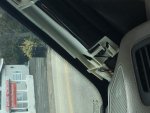mmckenna
I ♥ Ø
Those are all 800MHz antennas.
Left to right:
Larsen NMOSPEC-800 5.4dBi
Motorola branded 800
Motorola branded 800
1/4 wave 800.
The Larsen is going to get you the most metal in the air, but as Jon said, it's going to be a very poor performer.
But, you've got something to try. See if it works well enough to do what you want.
Left to right:
Larsen NMOSPEC-800 5.4dBi
Motorola branded 800
Motorola branded 800
1/4 wave 800.
The Larsen is going to get you the most metal in the air, but as Jon said, it's going to be a very poor performer.
But, you've got something to try. See if it works well enough to do what you want.



